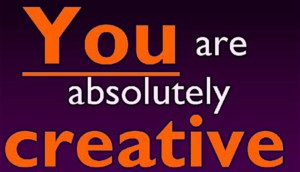What shall I make for my next creative project? It is easy to get stuck at “What the heck should I make next”?

Instead of focusing on “what” should I create, I humbly suggest asking yourself WHY–three times. Get very quiet and still and ask your head, heart and gut separately: Why do I want to make or create this thing? Let the voice of each intelligence center answer this question for you very distinctly.

What does your head say to you about this creative thing?
What does your heart say about it?
And what does your gut intuition say about it?
Write down each distinct intelligence center answer and reflect on each.

Clearly articulating why you’re creating what you are will light your path and continue fanning the flames inside you, and likely will touch others deeply too. Regardless if your creative thing is purely for your own enjoyment or you want it to be a commercial success–if you don’t start with why, you have no compass.
I’m writing my first science fiction book. When I start to doubt myself on why I’m writing this book I ask my head–-why am I writing this? My answer is mostly because I love the space/astrophysics/spiritual subjects involved and by doing the in-depth research involved I get to learn new things, “the latest and greatest”. I ask my heart, why am I writing this? I want to find more clarity and meaning about the cycle of life and the suffering involved in it. If I can find some peace in it, perhaps it will help bring peace to others too. I ask my gut, why? My gut says there are some older, deeper truths inside me that I can tap into, feel and know to be true. My intuition quietly says–this is important to you, your curiosity about scientific and spiritual facts and how they can co-exist in different realms. I can now go forward knowing I am doing the right thing by writing this book.
Imaginative thinking is at the core of art, science, and a number of other disciplines, but the science of imaginative thinking is a secret. I believe by tapping into (the usually un-reflected upon) WHY from our head, heart and gut perspectives can tap into our untapped imaginations.
Starting with why can lead to levels of excellence we never considered attainable, especially for long term creative projects. By emphasizing the WHY behind our motivations to succeed, versus the WHAT approach, which is less passionate, less inspired (and probably a more habitual approach) we can have confidence in our creative product. We can be authentic in our approach, which will–at the very least–delight us and perhaps even really inspire others.
Do your research first. Mark Twain said, “Get your facts first, then you can distort them as you please.” Good research is about asking broad questions, and thinking critically about the answers. It’s something everyone can learn, and do quickly with Google, and countless other search approaches. If we do this well, it will save us time, energy and money by reducing unknowns and creating a solid foundation to build the right thing, in the most effective way. After all time is–by far–our most precious commodity.

Where have you gotten your ideas in the past? Take the time to reflect upon this, then write your answers down. Next, what are you waiting for… go do that research. If it is being in nature and for example, examining something much more intensely than others do, then go do it!

How do I know if what I make will be the right thing? Because even if we’ve done the research, we still don’t know if we’re actually making something that works for others. Keep in mind this only matters if we aspire to have commercial success, many creative people don’t. But if you do then ask yourself:
Is my new book something that others will want to read? Example, beta readers, etc.
Is my performance art exhibit something others will be inspired to participate in? Example, do a sequence of “pilots” with other artist’s input.
What kind of targeted experiments can I run to find out? Example, reach out to real users.
You can read Part 2 of this post here.
Thank you for reading my post. My core message of everyone is creative resonates with people of all ages and walks of life. I invite all to become the best version of themselves and find true meaning by pursing long term creative quests. Read more in my recent book and my website: The Three Sources of Creativity: Breakthroughs from Your Head, Heart and Gut.



















 The key is to build an awareness of where your fire comes from regarding your ideas or problems. Does it originate from your heart, head, or gut intelligence center? In what proportion is the fire burning to solve problems from each center? From your heart/head/gut’s perspective is it 80/10/10 or 34/65/1 or 33/33/33? To facilitate this awareness,
The key is to build an awareness of where your fire comes from regarding your ideas or problems. Does it originate from your heart, head, or gut intelligence center? In what proportion is the fire burning to solve problems from each center? From your heart/head/gut’s perspective is it 80/10/10 or 34/65/1 or 33/33/33? To facilitate this awareness, 

